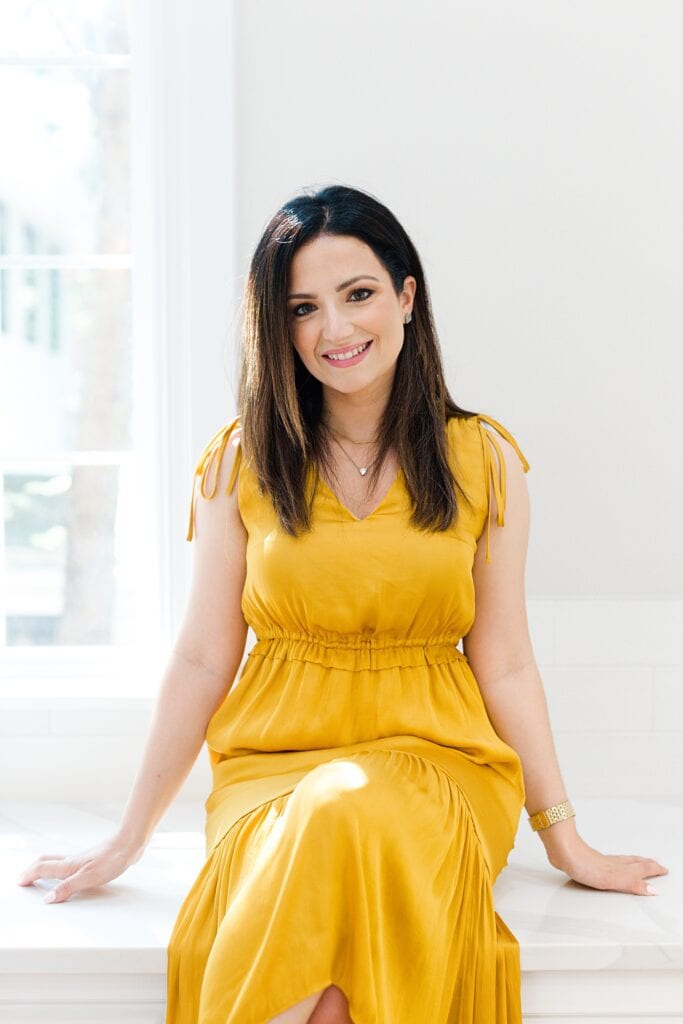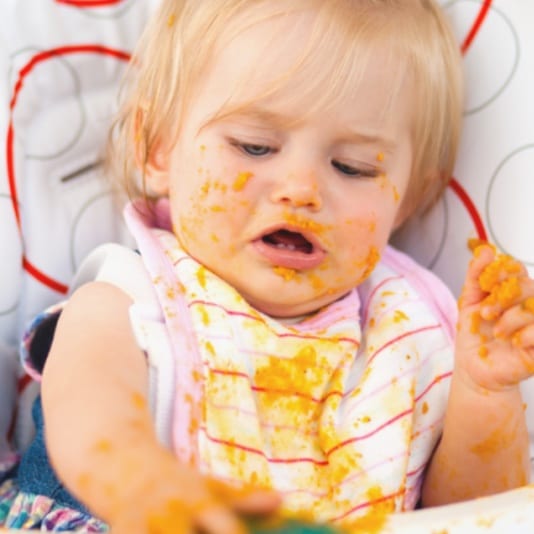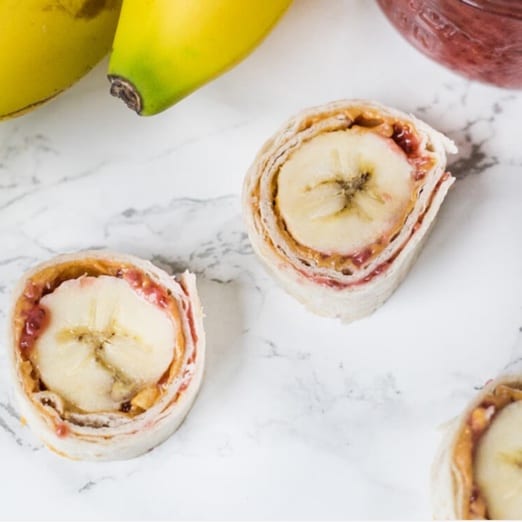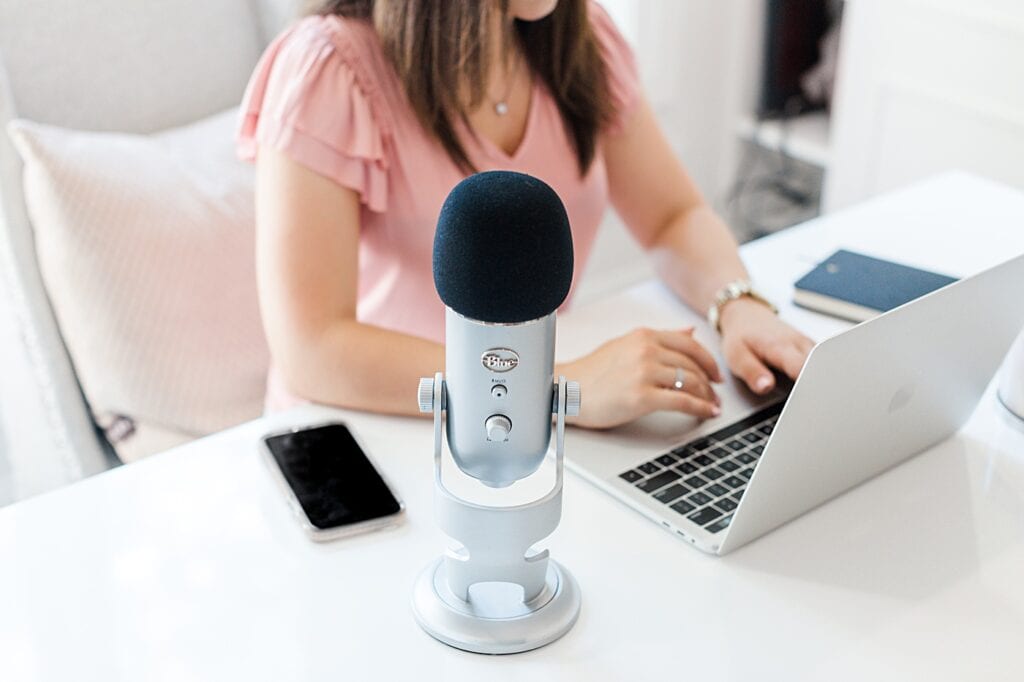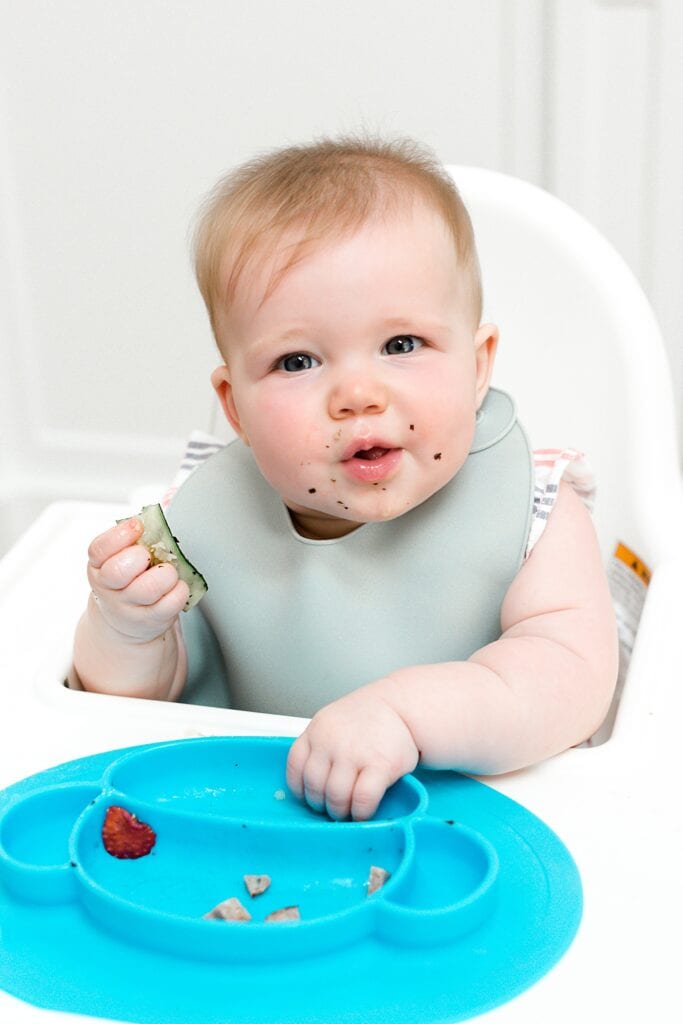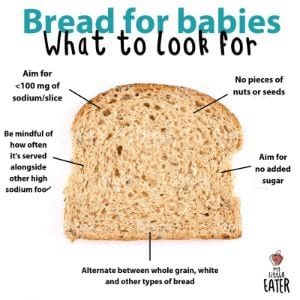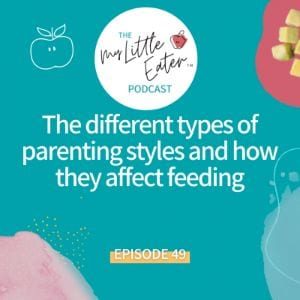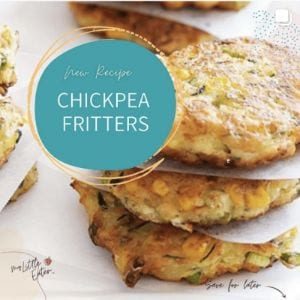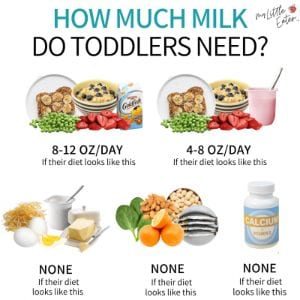
So you want to raise a civilized baby with table manners to use utensils? ? Perfect! I’m here to help. Let’s dive right in.
Please note: This post is not sponsored or influenced by any baby companies or brands whatsoever. The recommendations I make are purely brands I enjoy and have had experience trying out. There are some links to products where I do get a small commission from Amazon should you decide to purchase them through there. This helps pay for my services to you.
WHEN TO START OFFERING YOUR BABY UTENSILS
There’s no official recommendation, but I personally recommend to start offering utensils right from the first meal. There really is no such thing as too soon! Even though they won’t know how to use it that early, if it starts showing up at mealtime right at the beginning of their starting solids journey, it allows them to make the association that utensils and food go together quite easily! It will also give them more exposure to utensils early on and more opportunities to practice…which we know will lead to a greater and sooner likelihood of success.
Now, if you don’t do this, I can assure you…you are not behind, nor have you ruined your child’s opportunity to learn how to use utensils.
As I like to remind myself…I’m yet to meet an adult who hasn’t mastered the use of a utensil yet!
So if you’re not feeling like tackling this skill…then by all means don’t rush! But as with all things feeding and development, since it’s a skill…skills take practice. And I personally like to exercise any skill early on and often so it becomes really fine tuned and both baby and parent can reap the benefits sooner. Utensil use allows for more options when eating meals, it fosters more independence, and potentially lets you enjoy generally less messy meals!
WHEN SHOULD BABIES TYPICALLY START TO MASTER UTENSIL USE?

Like any skill, when a child masters it will be different for each and every one. But many parents and websites believe that healthy, term children aren’t capable of mastering utensil use until 14-24 months – which sooo isn’t true! While it’s very reasonable that some kids may very well take longer to master it (and that’s a-ok!), it’s usually just because they haven’t had enough opportunity to practice.
For example, if a baby or toddler has been spoon fed their entire life, or perhaps have only had minimal experience self-feeding, they may not have mastered the skill of accurately bringing food, or a utensil, to their little mouths with precision. For a baby who’s been self-feeding from the start, they may have better coordination and fine motor skills developed through more practice, and so this action may not be as hard for them. It all really depends on the amount of practice and encouragement they get. I’ve seen babies as young as 7 ½ or 8 months independently use a spoon, and babies as young as 5 ½ or 6 months independently use a “pre-spoon” (more on that down below). Mess will always be a factor! Independent use doesn’t mean impeccable table manners fit for fine dining. They’re littles after all!
But again, you don’t have to worry if your baby isn’t there yet.
SPOON OR FORK FIRST?

Good question! Babies generally master spoons first, if they’re the ones loading the utensil themselves. That’s because it takes a lot more precision to accurately spear food with a fork than it does to dip into food with a spoon. That being said, if utensils are being introduced to your child for the first time during toddlerhood, then I’ve seen both forks and spoons mastered at around equal times. It’s really different for every baby, and depends on how big food pieces are, the type of utensil they’re practicing with, and again…how often they get the practice.
HOW TO TEACH YOUR KIDS TO USE UTENSILS
The best place to start is by modelling utensil use. Even if your baby hasn’t officially started solids yet, you can pull their highchair up to the table with you at mealtime and let them watch you use your utensil to scoop and prick food, and bring it up to your mouth to eat. Give them a utensil to play with, wave around, and mouth. Encourage them when they bring it up to their mouth so they know that they’re on the right track!
When mealtimes actually start, there are a few things you can do.
Preloading the utensil:
- You can preload a spoon or fork and offer it to your baby to allow them to self-feed and practice on their own. You can do this while spoon feeding her bites of food in between in her own attempts to eat if spoon feeding is the route you’re going. If you’re going the baby led weaning route, you preload utensils in addition to having some finger food she can pick up if you like. I just love preloading because it really helps them figure out what to do in the beginning while still keeping baby in full control of the feeding process.
Here’s a little tip…if you’re having a hard time getting your baby to let go of the spoon so you can preload the next one, have a second spoon handy that you can preload quickly after the first and offer it to your baby. They’ll likely let go of the first spoon to grab the second spoon. If they just grab it with their other hand, then haul out a third spoon and circulate between preloaded spoons, so that each time you offer your baby a new one, they’re forced to let go of one before grabbing the next.
Check out this video from a mom who graduated from my Baby Led Feeding online course, who’s 7 ½ month old baby is perfectly demonstrating how preloading a spoon can work! This method keeps baby in control of the feeding process and gives her the practice she needs to master that hand-eye-coordination!
Mom said before, she would always turn the spoon the opposite way and bite the other end. Now she has gotten it after some practice! She enjoys yogurt and soup now.
Self-feeding practice!
You can also simply dump some puree directly onto the highchair (or into a bowl), and allow them to try and dip into it on their own and self-feed. Nothing replaces independent practice!
Tip: It’s always easier to try practicing with thicker puree textures when using a spoon, and larger soft pieces of food when using a fork.
Hand over hand method
This can work for a lot of people to help their baby get the scooping motion. You can gently place your hand over your baby’s as they dip a spoon into the puree, helping them make the scooping motion, and if needed, can then help direct the spoon to their mouth. I often see babies not exactly loving this method because sometimes we overdirect, and they just want to do it all themselves! ? So just be gentle and playful about it!
Best Baby Spoons and Forks (By Age)

Many of you wonder if babies really need special utensils. The answer is yes…but special doesn’t have to mean high tech or expensive. Special in the sense that I like to make sure that no matter what, you’re getting utensils that are:
-
Soft and baby safe
- Their aim sucks in the first few months, so bopping a metal utensil on their teeth, or risking poking themselves with a fork, is a no-no. Look for forks with rounded prongs.
-
Ideally, plastic free. But definitely BPA free.
- Silicone makes a great option!
-
Smaller in size
- Utensils like long handled spoons are not meant for babies to self-feed with…they’re meant for parents to use when spoon feeding baby! Imaging trying to eat from a utensil that had a super long handle like a ladle. Now trying to learn how to use a utensil for the first time that way!
Now…there are “extras” that I find helpful and are things you may want to consider based on age and skill level. These are not “musts”, but in my experience, can make things safer and easier. At the end of the day, as long as the first two pieces of criteria are met, use whatever your baby takes to, or that you’re comfortable with.
6 months+
- A prespoon – this is not a traditional spoon. It’s what we call a “prespoon”, which allows new eaters to be able to practice the motion of “dipping” a utensil into a puree without much of it flinging off in every direction when they inevitably flip it upside down, twirl it, wave it, and drop it. The key is in the little grooves that grab food and help it sort of “stick” on the spoon. This means your baby only needs to master the “dip”, and the hand eye coordination to get that prespoon aimed right into their mouth. It’s got a short handle, so it’s easy for them to maneuver, and is made of silicone.
Some suggestions that fit the bill:

8 months+
Transition baby into using utensils that have:
-
Fat/Knub shaped handled spoon/fork
- After a couple months, you can offer the first utensil that sort of resembles a real fork or spoon. I find choosing one with a super short, stubby handle that your baby can hold with their entire fist to maneuver and pick up food, is easiest. This works best with their natural hand grasp.
-
Shallow tipped spoon
- You also want to stick with a shallow tipped spoon (not one with a deep curve at the tip) so it’s easier to get food off of it using their lips.
Some suggestions that fit the bill:



10 months+
-
Short Length
- Aim for a length of around 5” to make it easy for baby to maneuver the tip of the utensil into their mouth and and scoop/prick pieces of food. Look for a soft handle still to keep utensil use comfortable for baby.
-
Soft handle
- Soft meaning it’s covered in a comfortable material like silicone. Remember, not 100% necessary…all suggestions!
-
Stainless steel tip
- If you want, you can introduce a stainless steel tip utensil here. Don’t have to, but if you want! A stainless steel fork can pick up more than just soft textures much easier (like meat).
-
Deeper spoon tip
- Now that you baby has had lots of practice, they likely don’t need a shallow spoon tip anymore. Let them practice the skill of taking food off a slightly deeper tipped spoon with their lips.
Some suggestions that fit the bill:


18 months+
-
Longer handled cutlery (still soft handles)
- Move onto longer handled cutlery (toddler sized). Chunky soft handles makes it easier for positioning
-
Introduce a toddler safe knife
- Introduce a toddler safe knife! This skill won’t come easy but practice can start now if they are ready.
Some suggestions that fit the bill:



24 months+
- Stainless steel toddler sized full set of cutlery
They’re now ready to have everything that you’d use too! Getting them a set of cutlery that’s smaller in size, but appears similar to what you use, can help encourage them to practice with them – because toddlers love to imitate their parents!
And now…for some FAQ’s around utensils use I received from my Instagram tribe!
WHAT IF MY TODDLER REFUSES THE UTENSIL I OFFER AND WANTS ADULT ONES INSTEAD?
As long as it’s safe! Just watch them closely so that they don’t bang a stainless steel utensil into their teeth. And please don’t offer an adult fork to them. We don’t want any eyes being poked here. If they take more interested in your utensils than theirs, try this:
- Offer them toddler sized/safe stainless steel utensils (see above)
- Offer them your spoon (not fork) and let them have at it. But still offer the one that you know will be easier for them to eat with at the same time. Usually, if they struggle a lot with the adult spoon, they’ll want to go back to the toddler sized one,or will resort to using their hands.
Which brings me to the next question…
MY CHILD RESORTS TO USING THEIR HANDS EVEN THOUGH THEY KNOW HOW TO USE UTENSILS!
This is ok and expect it to happen! For one, when they’re hungry and just want food in the belly, sometimes it’s just easier to use their hands. Who wants to spend time trying to precisely scoop or prick food on a utensil, miss six times, and then get just a teeny piece in their mouth, all while dealing with a growling stomach.
Also, babies and toddlers still need to explore food with their little hands! It’s how they learn about their environment. And, getting sensory stimulation and information via touching and squishing food vs. always having a utensil as a barrier, is actually a good thing! Especially if there’s a new food, or a food they haven’t learned to like yet, I would actually encourage them to touch it, squish it, and learn about it using their hands. We talk all about this in my Feeding Toddlers online course ? They’ll revert back to using a utensil eventually, so just let it happen for now. And although it’s a topic for another blog post… manners will come. Don’t worry about it not being polite to eat with their hands at this young age. Others can look away if they don’t like it!
MY BABY JUST PLAYS WITH A FORK/SPOON – SHOULD I KEEP OFFERING OR IS IT A DISTRACTION?

I would keep offering it. If it’s so much of a distraction that they don’t eat at all, then offer it midway or towards the end of the meal.
TODDLER STILL WAITS FOR ME TO PRELOAD SPOON, THEY STAB OR BANG IT IF I LET THEM TRY
Yeah…they’re still learning. They haven’t figured it out yet, so go through the steps outlined above for how to introduce utensils, and let them play and try at their own pace, while at the same time offering a preloaded spoon/fork for their other hand.
MY CHILD DROPS OR THROWS UTENSILS ON THE FLOOR CONSTANTLY!
Mmmhmm. Super frustrating. See my blog post on food throwing and follow the same general principles.
Are you ready to learn all there is to learn about feeding your baby or toddler? We all know there’s so much information to know to raise healthy eaters that they don’t teach you in the hospital as they send you off with your newborn. Check out my online courses to walk you through each stage of the feeding journey, and make you the feeding expert in your own home!
